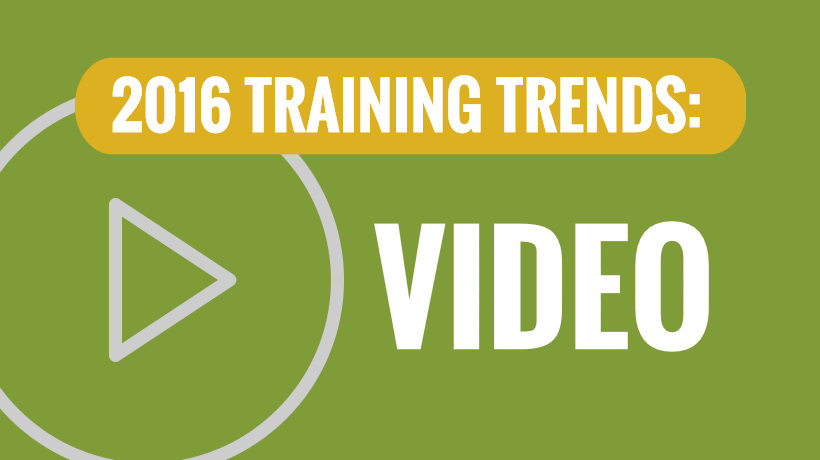2021 Is Bringing Video Learning Into The Spotlight
The COVID-19 global pandemic has prevented students from returning to schools due to the need for social distancing, revolutionizing the way that we learn and teach. Around 1.2 billion children worldwide are unable to go to school due to closures, creating a sudden shift and urgent reliance on technology to deliver lessons. During this period, online learning platforms are booming. It is unsurprising that some online learning platforms have seen an eightfold increase in enrollments for their courses. However, it can be difficult to keep track of all of the new trends that emerge in video learning. If you would like to learn more about video learning and video tutoring trends and stay in the know when it comes to new trends, read on.
Games Are An Excellent, Creative Way To Promote Active Learning
Active learning describes the experience whereby students are immersed in and engaged with the learning materials, rather than passively reading books and answering questions. Games can help students stay focused and make learning fun. This is why they are beginning to appear and will continue to appear in online learning lessons.
Personalization Is A Key Developing Trend In eLearning
The one-to-one nature of some aspects of online learning means that students receive increasingly personalized lessons. These will also continue to become more personalized in the future. The material will become more flexible, realistic, and relevant to each individual learner. Students can also directly ask the teacher to focus on particular areas of the subject that interest them or cause them difficulty.
Smart Devices Make Video Learning Extremely Flexible
The introduction of 5G and better internet speeds means that mobile users can stream videos and listen to audio at a greater speed, on the go. Learners can use their phone, tablet, smartwatch, or laptop to access their video classes, meaning that they can watch courses and tutorials anywhere.
Learners can now participate in their online classes wherever or whenever they wish, whether it is during their daily commute on the train or bus or during their lunch hour at work. If the sofa wasn’t appealing enough, now we can kill that boring time spent on public transport!
Peer Learning Is Gaining Momentum
A feature that is beginning to appear on a few online learning platforms is peer-to-peer tutoring [1]. This involves live tutoring calls between teachers and students in real time, over the phone, or by video. This type of learning encourages connections and friendships between students, allowing both teachers and learners to develop their communication skills whilst improving academic achievement for learners.
Quality Over Quantity Is A Requirement For Both Businesses And Learners
An average online video lesson is around 15-30 minutes, which is considerably less than the 1-hour or even 2-hour classes in schools and colleges. This type of bite-sized learning is only set to continue, becoming shorter and shorter in duration in order to keep learners interested and offer flexible online learning.
With the average concentration span of a student [2] of around 10-15 minutes, online learning has begun to create shorter lessons to suit learners' needs, which is only set to continue.
Artificial Intelligence Will Impact All Industries
AI can effectively improve learning, provide students with feedback and personalize the learning experience. Examples of AI in education can be seen in language courses, which allow students to practice their new language with a computerized native speaker.
Automated tasks, such as email reminders and marking multiple-choice tests will also improve and become more effective. Whilst AI cannot currently replace an online tutor, technological developments and advancements may change this in the future.
VR, AR, And MR Are Growing Rapidly
Virtual, Augmented, and Mixed Reality are industries that are growing rapidly. Around 6.86 million VR/AR devices are predicted to be shipped worldwide in 2023, with the market predicted to reach $209.2 billion in 2022 [3]. Businesses and educators are now taking advantage of this fast-growing market to immerse students in this new, exciting, learning environment. VR/AR can make learning much more interesting for students, as they begin to experiment with new technologies at the same time as being introduced to learning material.
Again, this promotes active learning [4], as students are more likely to concentrate, absorb, and engage with learning content if it is presented to them in an innovative, interesting fashion. 82% of all online traffic will be video content by 2022.
Although it's a prediction, these videos or video classes will become shorter and more personalized, specifically for video learning and video tutoring, whilst including games and maybe even the occasional robot. eLearning platforms for businesses [5] will continue to develop and explore the advantages of including video-based learning for their internal needs and job-related training.
The list of trends above is not exhaustive. There are a number of trends that will undoubtedly appear in the coming years, yet the ones we have pointed out in this blog post are slowly beginning to appear on particular online learning platforms.
Take advantage of these trends and incorporate them into your online classes or live tutoring sessions. Keep your students engaged, enjoy new technologies, and continue sharing or expanding your knowledge today.
References:
[1] What is Peer to Peer Tutoring?
[2] The Science of Attention: How To Capture And Hold The Attention of Easily Distracted Students
[3] 43 Virtual Reality Statistics That Will Rock the Market in 2020
[4] 9 Ways eLearning Technologies Are Changing How We Acquire Knowledge
[5] The Popularity of eLearning Platforms: 5 Ways Your Company Can Benefit







